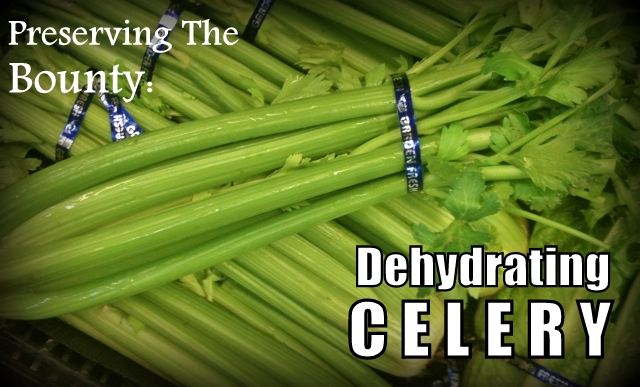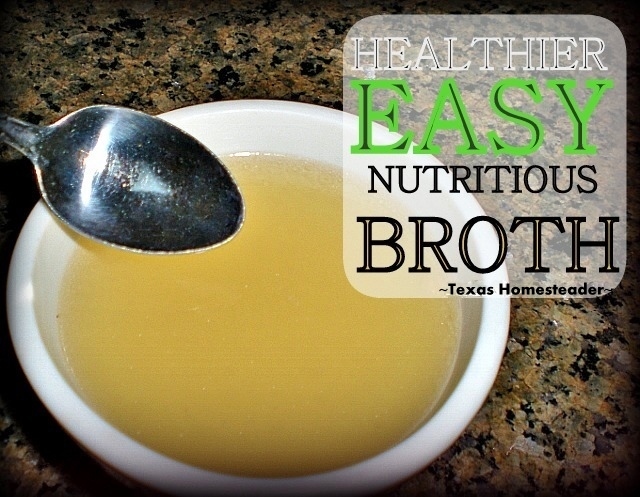by Texas Homesteader ~
Have you ever thought about eating your compost to eliminate food waste?
Stay with me now, I’m not suggesting that you rifle through the compost heap and snack on its contents. Come see ways I’ve saved food previously destined for the compost pile.
How To Reduce Food Waste: Going Further
Food waste – we all hate it. We work diligently to make sure none of that food we’ve paid our hard-earned money for is ever wasted.
We’ll make sure leftovers are eaten before they go bad, and meal plan to be sure to use the food we’ve purchased.
But are we doing all we can to eliminate wasted food? Maybe… But maybe not!
Today I’m talking about food previously destined for the compost heap – BEFORE it gets there.
Surprisingly enough, there are often great honest-to-goodness food uses for those scraps that you may or may not have even thought of. I’ll share a few of my favorites below for:
-
-
Onion Powder
-
Breadcrumbs
-
Vegetable Trimmings
-
Homemade Broth
-
Dried Herbs
-
and more! Check it out.
Cooking Broccoli Stems To Eliminate Food Waste
There’s more to broccoli than just the florets. You can eat the stem too instead of tossing it in the compost.
After the florets are trimmed and steamed for our supper, I often trim the stalk too. I’ll peel the tough outer skin and chop much of the stem (except for the most fibrous tougher sections) into smaller pieces.
Then I freeze them for use in my next Chicken Fried Rice stir fry.
The small broccoli stem pieces, having been previously frozen, are softer than fresh & cook up quite nicely in my stir fry. They add flavor, color and nutrition too!
Dehydrating Onion Trimmings Reduces Food Waste
I’ve found a way to use previously-wasted trimmed onion parts – the tough neck & stem.
I remove the paper skin & chop those fleshy onion trimmings deemed too tough to cook with. Then I Dehydrate Onion Trimmings & use my coffee grinder to turn them into onion powder.
Whether red, yellow or white onions, I’ve saved those sections previously deemed too tough to eat & destined for the compost. And by doing so I also replaced an item I used to have to buy.
Now that’s a two-fer win, y’all!
Dehydrating Vegetable Trimmings For Seasoning
I used to buy jars of spicy jalapeno seasoning. But now I make my own with jalapeno trimmings.
I dry and powder seeds & ribs from spicy jalapenos and other savory veggie trimmings such as bell pepper for seasoning our food on the cheap.
Preserving Fresh Produce Before It Goes Bad
How about making sure that fresh produce never reaches compost-worthy status in the first place? I’m able to keep fresh produce such as celery fresher & crisper for longer.
I place the root-end of the celery in water, much like a bouquet. No more limp celery that goes bad too quickly.
But what about preserving the excess celery? After I use fresh celery for my recipe I’ll often dehydrate the rest, both stalks and leaves.
The leaves are crushed and added to my crushed celery spice jar. The chopped ribs are dehydrated and placed in a glass jar in the pantry.
Add dehydrated celery to a simmering soup & it’ll rehydrate right there in the stockpot!
But once again I’ve easily turned produce I knew I wouldn’t be able to use into a product I used to have to buy. SCORE!
Re-growing Celery & Onions From Scraps
Don’t toss that celery or onion nub in the compost!
Those root sections can be placed in water until they grow a few roots and then transplanted. More food growing for FREE!
I’m constantly snipping off the fresh onion regrowth from my kitchen windowsill and adding it to my recipe right then.
Dehydrating Excess Fresh Herbs: No Food Waste!
Small amounts of fresh herbs can be saved for later too. Sometimes I harvest a stem of a fresh herb & strip & chop the teaspoon of fresh leaves for my recipe. But what about the leaves on the rest of that stem?
I’ll strip, dry and crush the remaining leaves. I add them to the seasoning jar I have in my kitchen spice drawer for each herb. Rosemary, basil, sage, thyme – nothing goes to waste!
NOTE: For those of you wanting to see my setup for drying full bunches of fresh herbs, you can see my Herb-Drying Setup Here.
Replanting Sprouted Produce In Your Garden
You bought that head of garlic but time got away from you. The next thing you know it’s sprouted.
Wait a minute… sprouted?
Hey, if it wants to live that badly why not PLANT it?
Yep, separating & planting each clove from that head of garlic will result in each clove growing a whole new head of garlic, each containing several cloves.
That gives you much more garlic than you started with!
I’ve done the same thing with a sprouted red potato, cutting it up into chunks (each including at least one eye) and planting them. Each piece grows into more potatoes.
So if you see your produce sprouting, don’t chunk it into the compost. Think about planting the sprouting pieces to grow more food for your family.
Finding FREE Bread Crumbs
I’m constantly baking RancherMan’s favorite soft sandwich bread. When I cut that bread into slices it sometimes makes a crumb mess on the counter. I make them into homemade breadcrumbs for such dishes as Potato Cakes or pork chops.
I can even season them with those same dried herbs I didn’t toss in the compost earlier. See, it helps to save those small scraps of food!
Fruit Peels/Cores Turned Into Vinegar
Fruit peels & cores can be saved from the compost pile too by turning them into homemade vinegar. I’ve made both apple cider vinegar & pineapple vinegar from discarded cores & peels.
It’s a simple process and it’s eliminated food waste. Plus once again I’ve made for myself a product I used to have to buy.
Best Food Waste Tip: Homemade Broth From Chicken Bones!
After that delicious Homemade Chicken is enjoyed for supper and the carcass is picked clean of cooked meat, the bones and trimmings have another very important use!
Place them in a slow cooker and make the most delicious, healthy broth you ever tasted.
I can make Instant Pot Broth even faster & with true push-button convenience! It really doesn’t get any easier than that, folks.
Using this tip, yet another thing I used to buy I now provide for myself. I’m seeing a trend here, y’all!
Whichever method you use, making broth is incredibly easy.
And healthy.
And CHEAP!
So if you decide to try any of these food waste tips, be sure to make your own broth from meat trimmings & bones. In my opinion it gives you the most bang for your buck.
So there ya go. The next time you’re headed for your compost bucket with scraps of food, take note. Hummmm… Can we EAT this??
Oftentimes the answer is ‘YES’!
~TxH~
Preserving The Harvest Posts
Sauce
Canning
- Water-Bath Canning Apple Pie Filling
- Canning Fresh Asparagus
- Water-Bath Canning Pears In Light Syrup
- Canning Garden Corn
- How To Reuse Canning Lids
Pickling
Drying/Dehydrating
- My Simple, Zero-Waste Herb Drying Setup
- Dehydrating Fresh Pumpkin For Easy Storage
- Dehydrating Shredded Potatoes For Hash Browns
- Harvesting & Preserving Coriander (Cilantro)
- Preserving The Harvest: Oregano
- How To Make Homemade Jerky Strips
Techniques
- Growing, Harvesting & Preserving Garlic
- Accumulating Okra When Your Harvest Is Small
- How to Grow The Best Tomatoes
- How To Tell When Watermelon Is Ripe
…And Much MORE!
See All Preserving The Harvest Posts
C’mon by & sit a spell! Come hang out at our Facebook Page. It’s like sitting in a front porch rocker with a glass of cold iced tea – lots of good folks sharing! You can also follow along on Pinterest, on Twitter or on Instagram.
If you’d like to receive an email each time a new blog post goes live it’s EASY to Subscribe to our blog!























This is one of the most useful posts I’ve read in a long time! I “reuse” almost all of my vegetable trimmings (I say almost all because cabbage, broccoli and cauliflower don’t work in this application) by saving them in gallon sized ziploc bags in the freezer. Once I have two bags full, I make vegetable stock to use as the base of quick soups and gravies.
I’m a huge fan of homemade broth, Sissy. And I’m with you on the cabbage, broccoli & cauliflower scraps, although I use the broccoli stems peeled and chopped in my chicken stir-fry for additional flavor, color, bulk and nutrition. ~TxH~
Ha! I finally found someone more frugal than myself!
I have saved onion bits for soup base, but, never saved the onion/pepper bits for a spice mix– what a great idea!
You do beat all Mrs.TexasHomesteader!
LOL MeanJean – It all started when I excitedly purchased some jalapeno powder years ago so I could add the spice to my own plate without subjecting others to that kind of heat. Then I wondered (as I often do) “I wonder if I can make that myself??” Several days later as I was de-seeding jalapenos to bring down the heat level for company at a dinner party, the light bulb came on. Yep, I use that jalapeno powder all the time in many different dishes. And I have a spice jar that’s a mixture of many savory dehydrated veggies all powdered together – bell pepper and some of the onion along with various herbs. It’s my all-in-one seasoning & I like to use it with soups & such. Yep, I’ve been eating my compost for years! LOL ~TxH~
A couple of thoughts –
I’ve never had great luck here in Oregon growing garlic heads from those little teensy annoying garlic cloves or the cloves that have sprouted but I do plant them and often just trim some of the sprouts for whatever I’m cooking and they keep on sprouting, I also toss them into the bag in the freezer that is destined to become vegetable broth.
I do put bones in the compost, after boiling the daylights out of them they are very soft and quite free of any meat product so in they go. I never see them in the finished compost. I also sometimes toss them into the fireplace and then they still end up on the veg or flower garden. Crab and shrimp shells (I DO live near the Oregon Coast) go right into the compost. If you’ve ever seen a field that has had shrimp shells (Kind of stinky for awhile) spread on it you are missing something,
I love all your tips Candace, thanks for sharing! And you’re right, those bones are often crumbly after their broth-making cooking so I should totally toss them into the composter too. Especially since I have a tumbler so there’s no opportunity for wildlife to come scratching around for it. ~TxH~
When I first saw the message it said “How to eat your compost” you had me worried. I thought I was going to have to set up a go fund me page, that you guys were starving and resorting to……… 😉 I feel so much better after ready the full article and as usual it’s GREAT! Now I can sit down and enjoy my morning coffee knowing everything is honky dorey.!!!!
LOL Patti! I must admit I was after an eyebrow-raising reaction to the title. But let me assure you (although we’re eating plenty of our pre-compost food these days in the form of onion powder, broth and much more) everything is definitely hunky dorey at the Homestead! XOX ~TxH~